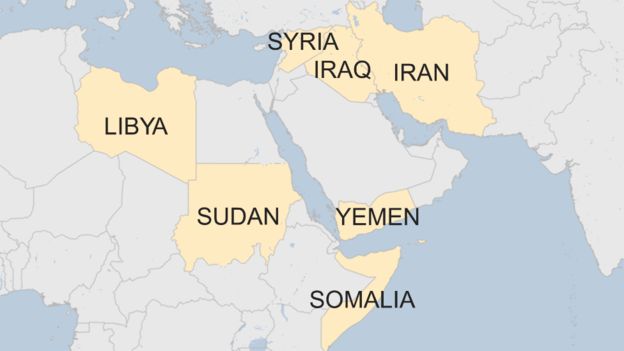
On Saturday, April 29, 2017, President Donald Trump celebrated his 100th day in office. The marker has become a perennial fixture on the American political calendar since Franklin Delano Roosevelt (1882-1945), the 32nd President of the United States, helped the country limp back from the Great Depression with a flurry of new legislation within his first 105 days in the White House.
Though the period is often too short to judge a new leader's achievements objectively, every US leader since has strived to achieve one or more major milestones within this time. In his October “Contract with the American Voter” address in Gettysburg, Pennsylvania, Mr. Trump outlined his 100-day plan if elected the 45th President of the United States. Here are some of the actions the US leader has taken to fulfill his campaign promise.
The Environment

President Trump has always been a vocal skeptic of global warming and a big supporter of traditional energy companies. Hence, it came as no surprise that among his first actions were executive orders to revive the construction of the controversial Keystone and North Dakota pipelines and loosen restrictions on offshore drilling. Mr. Trump also issued a directive to reverse the Clean Power Plan put in place by his predecessor, former President Barack Obama, and has presented a proposal to decrease funding for the Environmental Protection Agency. If passed, it will drastically cut programs that raise awareness for and help combat climate change.
The Economy

The self-made billionaire businessman, who coined the slogan “Make America Great Again,” had promised US citizens he would do everything in his power to bring back manufacturing jobs to the country. The president fulfilled his pledge on the first day in office by withdrawing from the Trans-Pacific Partnership, which he believes is detrimental to the US economy and job market. However, the gesture is largely symbolic given that the 12-nation trade agreement orchestrated by Mr. Barack Obama has not been approved by the US Congress.
Late last month, the rumor that Mr. Trump was considering backing out of the North American Free Trade Agreement (NAFTA), a 23-year-old trade deal with Mexico and Canada, caused some concern in the markets. Fortunately, on April 27, the US President calmed frayed nerves with an announcement that he was planning to renegotiate, not cancel, NAFTA.
On Wednesday, April 26, the Trump administration announced a significant tax overhaul. As promised during the campaign, it simplifies the tax code by reducing the number of tax brackets for individuals from seven to three — 10 percent, 25 percent, and 35 percent. If passed, it will lower the top tax rate paid by about 5 percent, reducing the tax burden for most Americans. The bill also proposes cutting the corporate tax rate from the current 35 percent to 15 percent and reducing the capital gains tax from 23.8 percent to 20 percent. It is unclear if Congress will approve the proposal given that there is not enough detail on how the administration plans to make up for the revenue lost due to the cuts.
Healthcare
Repealing the Affordable Care Act, or “Obamacare,” has been on the Republican agenda ever since it was passed in 2010. However, the initial attempt to repeal it in March failed to get the required votes in Congress because of lack of clarity on how it would be replaced. Not deterred, the Trump administration has introduced a revised bill that is currently being assessed by lawmakers.
International Affairs

In an effort to keep America safe, on January 27, President Trump issued an executive order banning citizens of Iraq, Syria, Iran, Libya, Somalia, Sudan, and Yemen from entering the country for 90 days. On February 3, US District Court Judge James Robert deemed the order unconstitutional and lifted the ban. A second, revised iteration announced on March 6 met with a similar fate on March 29.
During his campaign, President Trump had promised Americans he would not be drawn into Syria’s six-year-long civil war. However the horrifying images of children suffering from a chemical gas attack that killed 85 people in the rebel-held province of Idlib on April 4 compelled the US leader to change his stance. On April 6, the US president ordered air strikes on Syria’s Shayrat air base. The firm action earned the president praise from allies like the U.K. and France, while Russia and China called it an “aggression.”
Border Security

Funding a wall between the US and Mexico was one of the biggest components of Mr. Trump’s campaign platform. In his first week as president, he signed an executive order to commence the construction. However, a recent attempt to get Congress to approve part of the $21 billion USD cost to build the 1,000-mile-long wall was met with resistance from members of the Democratic Party. Though it has been removed from the budget, Mr. Trump has promised the border wall will eventually be built.
Resources: cnn.com, npr.com, Atlantic.com, BBC.co.uk